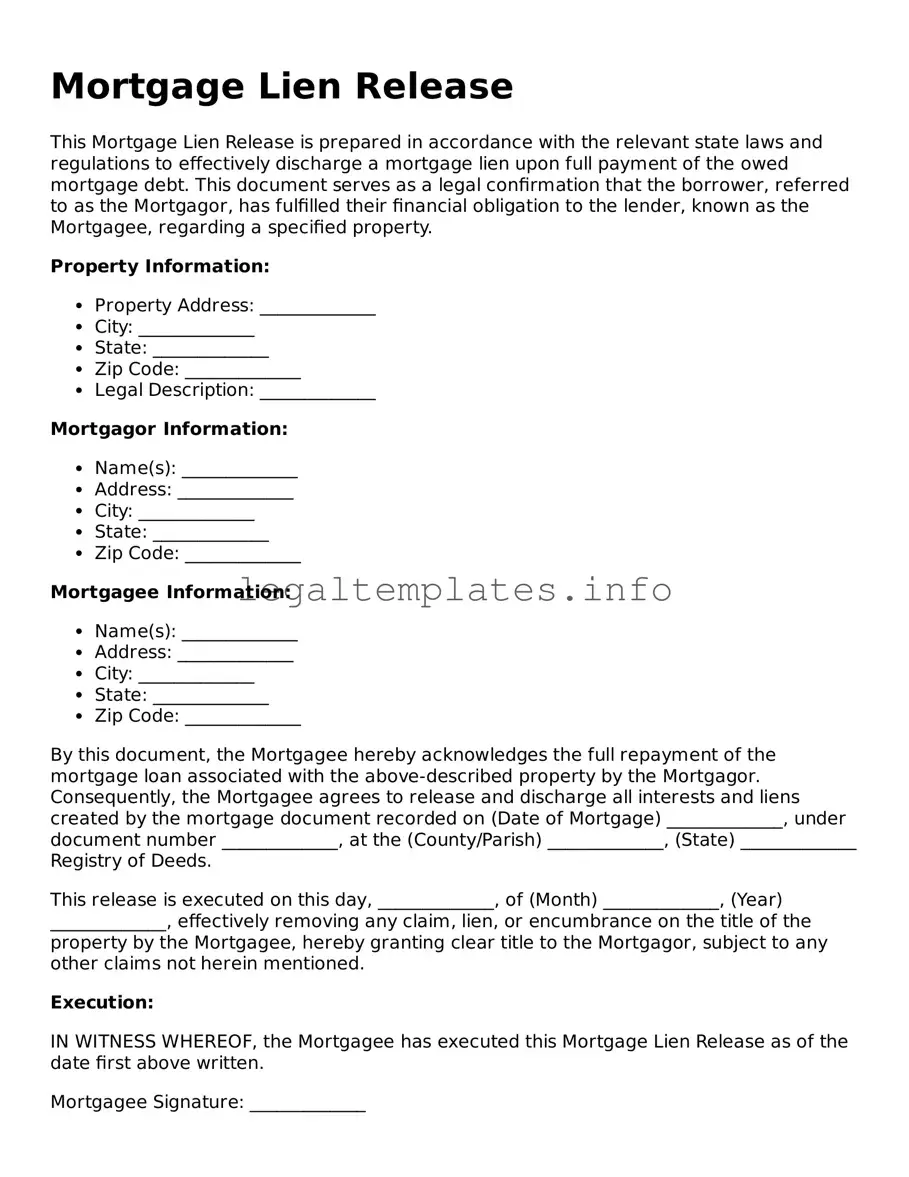Mortgage Lien Release
This Mortgage Lien Release is prepared in accordance with the relevant state laws and regulations to effectively discharge a mortgage lien upon full payment of the owed mortgage debt. This document serves as a legal confirmation that the borrower, referred to as the Mortgagor, has fulfilled their financial obligation to the lender, known as the Mortgagee, regarding a specified property.
Property Information:
- Property Address: _____________
- City: _____________
- State: _____________
- Zip Code: _____________
- Legal Description: _____________
Mortgagor Information:
- Name(s): _____________
- Address: _____________
- City: _____________
- State: _____________
- Zip Code: _____________
Mortgagee Information:
- Name(s): _____________
- Address: _____________
- City: _____________
- State: _____________
- Zip Code: _____________
By this document, the Mortgagee hereby acknowledges the full repayment of the mortgage loan associated with the above-described property by the Mortgagor. Consequently, the Mortgagee agrees to release and discharge all interests and liens created by the mortgage document recorded on (Date of Mortgage) _____________, under document number _____________, at the (County/Parish) _____________, (State) _____________ Registry of Deeds.
This release is executed on this day, _____________, of (Month) _____________, (Year) _____________, effectively removing any claim, lien, or encumbrance on the title of the property by the Mortgagee, hereby granting clear title to the Mortgagor, subject to any other claims not herein mentioned.
Execution:
IN WITNESS WHEREOF, the Mortgagee has executed this Mortgage Lien Release as of the date first above written.
Mortgagee Signature: _____________
Name (Print): _____________
Date: _____________
State of _____________
County of _____________
On this day, before me, _____________ (Name of Notary), a Notary Public in and for said state, personally appeared _____________, known to me (or satisfactorily proven) to be the person(s) whose name(s) is/are subscribed to the within instrument, and acknowledged that he/she/they executed the same for the purposes therein contained.
In witness whereof, I hereunto set my hand and official seal.
Notary Public Signature: _____________
My Commission Expires: _____________
